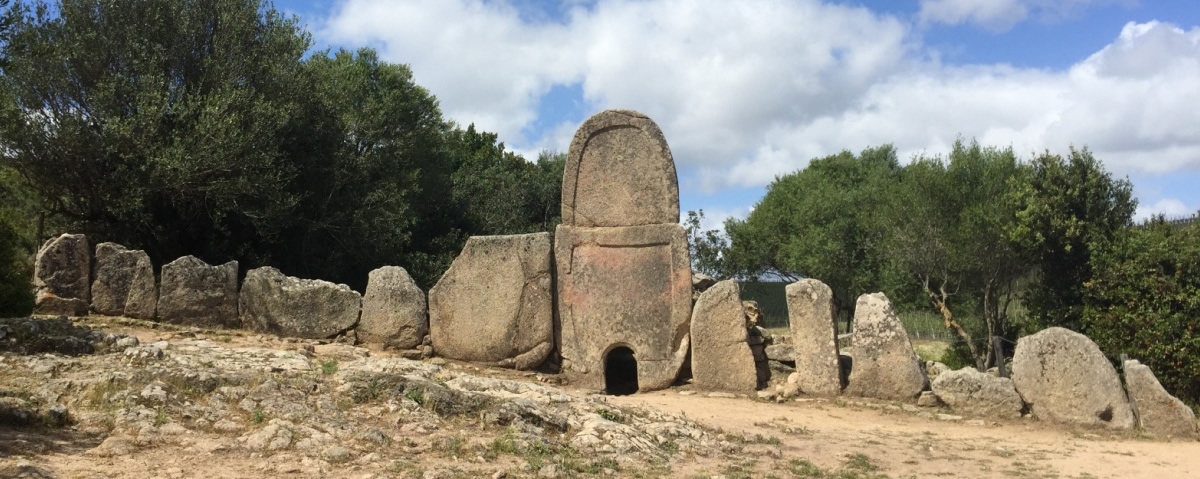6 Steps To Better Know The Nuragic Civilization 0 Commentaires

Sardinia is not only sun, sea and beach, wine and good food: Sardinia is above all history and culture. And its charm is there, reachable by anyone who wishes to uncover the area. The Nuragic civilization has left a land scattered of jewels that we still struggle to penetrate in their entirety. The houses were truncated conical towers built with large blocks of stone, the nuraghi, from which the nuragic civilization took its name. The people lived with sheep-farming, agriculture, trade with other peoples (Phoenicians, Etruscans, Carthaginians), handicrafts. They were polytheists, revered elements of nature, and buried the deceased in large stone tombs together with their funeral kit. Certainly, they had acquired the dominance of some metals and used them to work the stone long before others did. Undoubtedly the Sardinians had a culture they protected with such a capacity that we have not yet come to understand. It was dominated by an elite of warriors, the Shardana, main performers of the nuragic world and was divided into clans, each of which controlled its territory defending the people in case of conflict.
-
Nuraghe (read here: The Nuraghi: Ancient Heritage Of Sardinia)
The Nuraghe are constructed as towers in the shape of a truncated cone, built with large stones, of smaller size as the height of the tower increases. About seven thousand Nuraghe have arrived at these days and their name derives from the word nurra, which means "pile", "accumulation", but also "cavity", a construction made by "accumulating" large stones.
-
Dolmen, Menhir & Cromlech (read here: Dolmen, Menhir and Cromlech)
In Sardinia too there are megalithic buildings of great attraction such as Stonehenge. The pre-nuragic populations scattered the island territory of Menhir more or less worked boulders driven into the ground, of Dolmen formed by two vertical stones supporting the one horizontally placed above it and finally of Cromlech, megalithic circles with the probable calendar function for the calculation of the rising and the setting of the sun during the solstices.
-
Domus De Janas di Malghesi (read here: Domus de Janas of Malghesi: a fairy house)
...Domus de Janas they were called;
the shepherds with their flocks went by before them;
and the peasants plowing the fields with the strong yokes.
Fairy tales were born to be narrated in winter,
to amazed wayfarers and naive children,
before the grateful fire of the fireplaces:
of arcane magicians and malign witches,
of charms and spells, of fairy houses.
-
Sacred Wells and Sacred Sources (read here: Plan a visit: Holy Wells & Sacred Springs)
The Sacred Wells and the Sacred Sources are the typical Sardinian underground structures designed in the Bronze Age, probably popularized by the Shardana population, for the worship of water and the protection of springs. It is accessed via stairs made of squared stones. The cover prevented wind and rain from polluting the water thus delaying evaporation. Without direct sunlight, algae growth was also avoided and the water was kept cooler at a constant temperature.
-
Giants Tombs (read here: Tombs of the Giants)
These strange constructions very present in the Sardinian territory can be found only in this region and nowhere else in the world, which is why they are of unrivalled importance and value. They are called Giants Tombs because traditionally it was believed that they housed a single particularly tall human body since they are about ten meters long. In truth, the bone findings reveal that many bodies were housed in the tombs.
-
Shardana (read here: The Shardana: Warriors Of Sardinia)
The Shardana, populations coming from the western Mediterranean and belonging to the Sea People Alliance in the second millennium BC, would be identifiable with the Nuragic warrior populations of Sardinia. Their society was organized by several groups occupying various areas of the territory, keeping in close contact probably through those simple tower nuragic constructions, positioned on the peaks of the hills, used as sighting towers in visual contact with each other. A community organized in clans, with a leader, in villages composed of circular huts with a thatched roof, very similar to today's the barbaricine pinnettas (typical barbaricini shepherds hut)
--
written by Daniela Toti
In the Photo: Tomb of the Giants of Coddu Ecchju in Arzachena
Share your opinion with us!